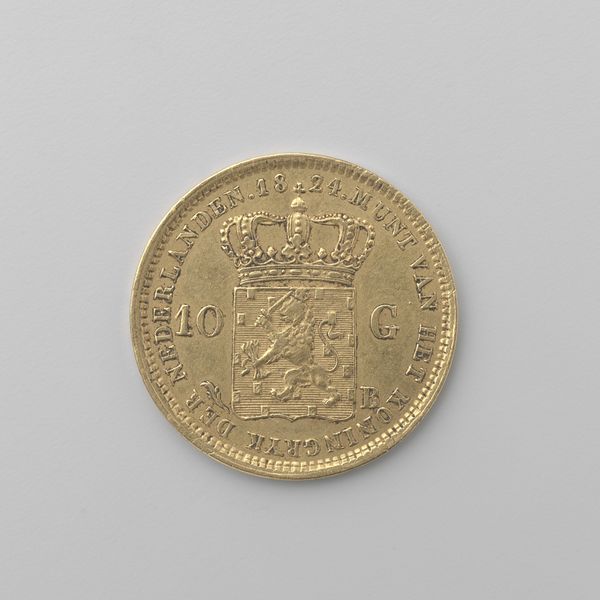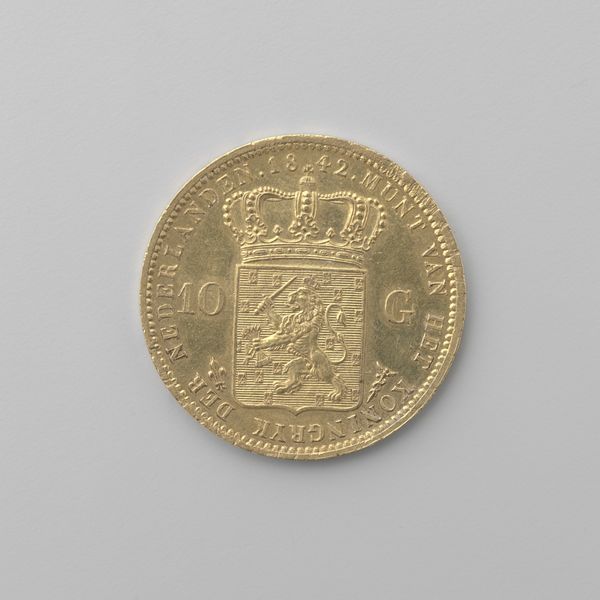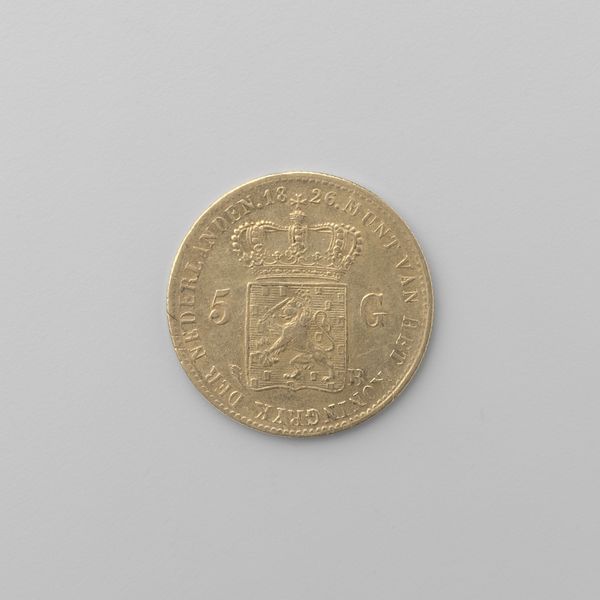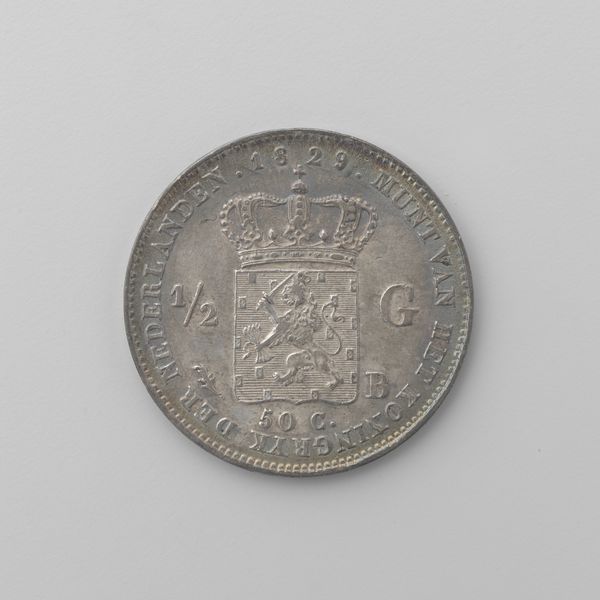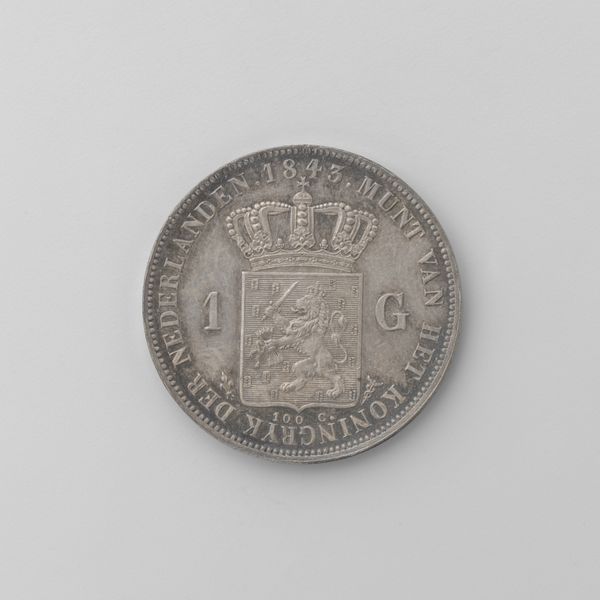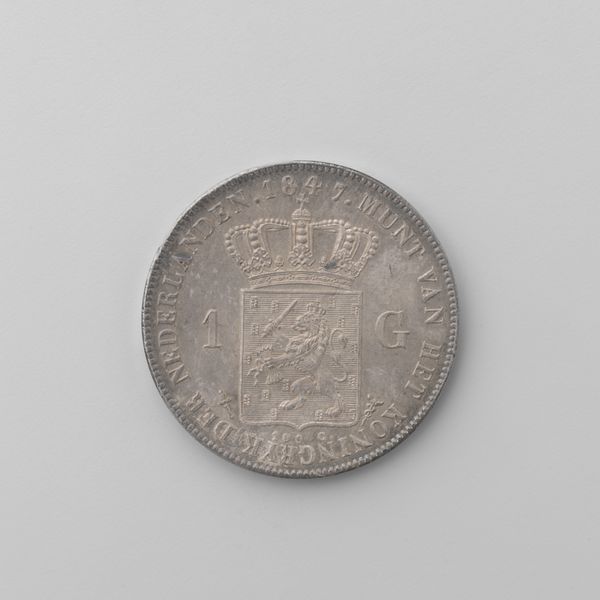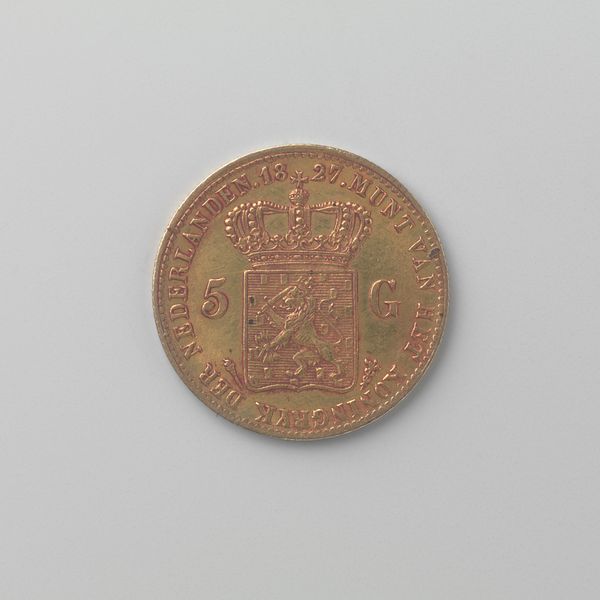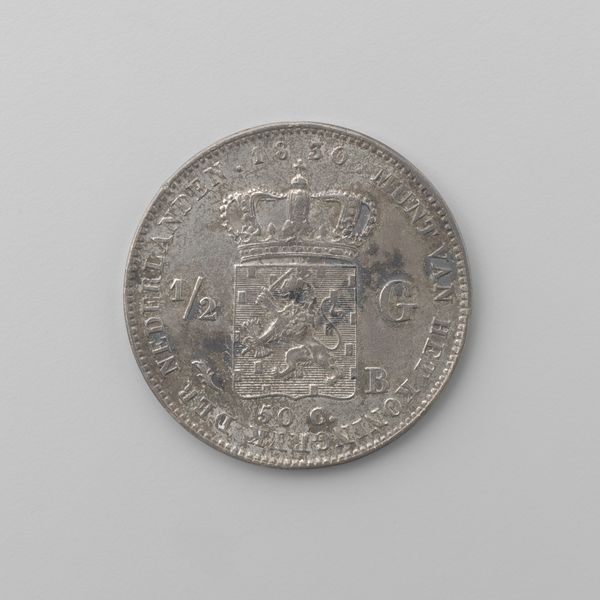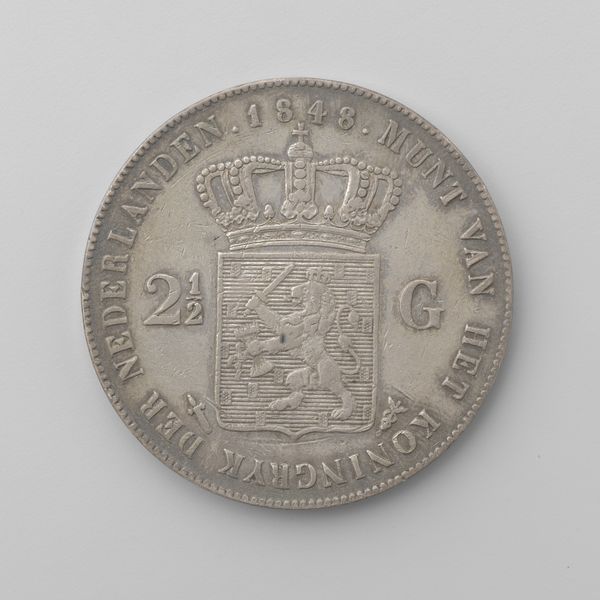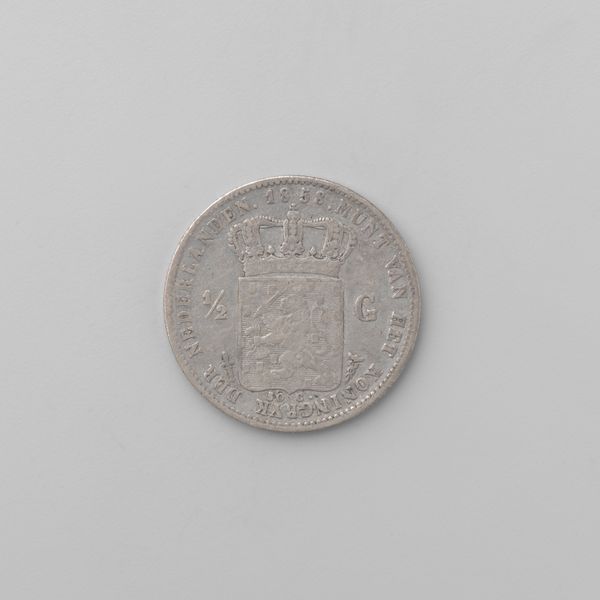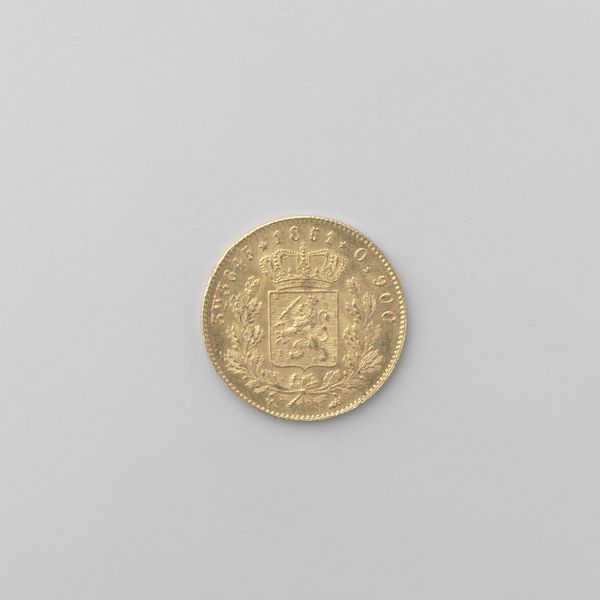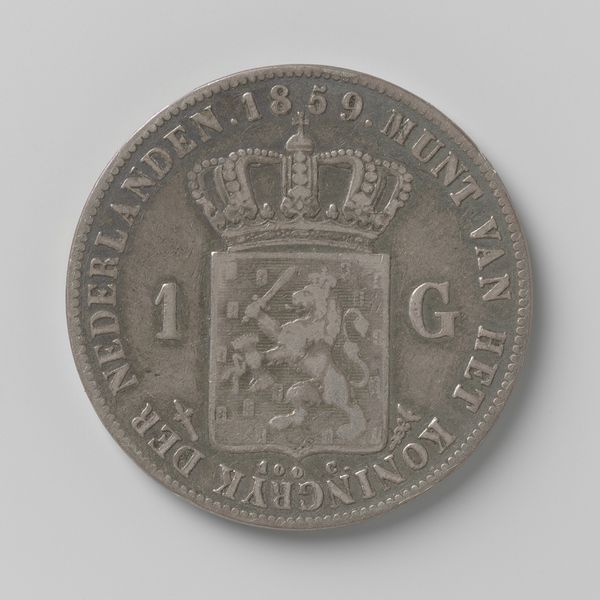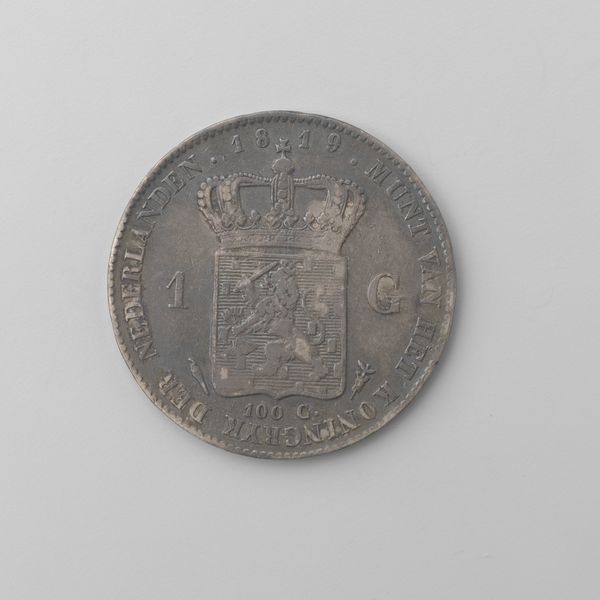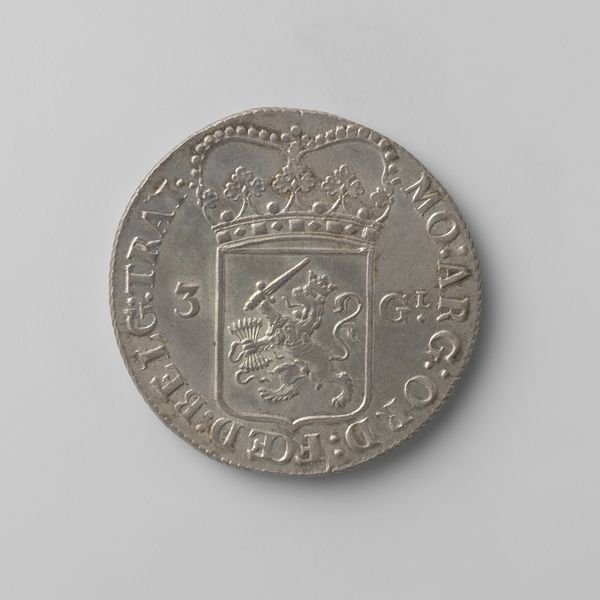
Nederlandse negotiepenning of enkele Willem, 1848 1848
0:00
0:00
metal, engraving
#
portrait
#
studio photography
#
product studio photography
#
product shot
#
antique finish
#
dutch-golden-age
#
metal
#
polished
#
folded paper
#
embossed
#
metallic object render
#
golden font
#
decorative-art
#
engraving
#
foil embossing
Dimensions: diameter 2.25 cm, weight 6.72 gr
Copyright: Rijks Museum: Open Domain
This Dutch coin, also known as the 'single Willem', was minted in 1848 during the reign of Willem II. Struck in gold, it's a fascinating example of how value is embedded in material, design, and socio-political context. Consider the inherent qualities of gold itself. Prized for its malleability, conductivity, and resistance to corrosion, it has been used to mint coinage for millennia. Here, the gold’s intrinsic value is amplified by the coin’s function as a symbol of national identity. Note the stamped imagery: the crowned shield with the Dutch lion, encircled by oak leaves. These motifs speak to the power of the monarchy and the natural resources of the Netherlands. The date is also stamped on the coin, indicating that it was made during a time of political upheaval, known as the year of revolutions. Next time you see a coin, remember the layers of meaning embedded within its material and design. It’s a potent reminder that even the smallest objects can tell big stories.
Comments
No comments
Be the first to comment and join the conversation on the ultimate creative platform.
